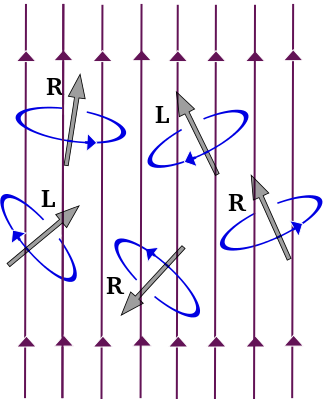Magnetic fields, imaginable as springs that prevent the collapse of matter on small spatial scales, can influence the formation of cosmic structures. If they are present and strong in the Early Universe, magnetic fields could affect the seeds of galaxies and hence the properties of these objects at different cosmological times.
The evolution of the magnetic field in a plasma is coupled to the one of the velocity field and mathematically described by the magnetohydrodynamical (MHD) equations. At relativistic energies, like in the very early Universe about 10-6 seconds after the Big Bang, a new current besides the Ohmic one can occur in an external magnetic field. This chiral current is related to the difference between left- and right-handed fermions and can alter the evolution of magnetic fields. The theory describing this effect is known as "chiral MHD".
We solve the chiral MHD equations numerically using the Swedish supercomputer "Beskow" in order to determine the strength and structure of magnetic fields in the Early Universe. Interestingly, chiral effects occur also in neutron stars and condensed matter physics.

Illustration of the chiral effect: Left- and right-handed fermions in an external magnetic field can lead to a new current.